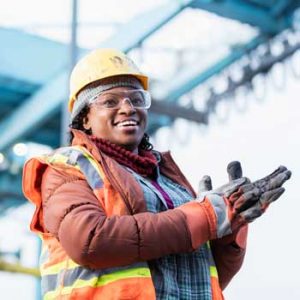Connecting With Construction’s Underrepresented Groups
Careers in construction are opportunities that should be accessible to anyone regardless of race or gender. But in reality, the workforce has not truly reflected this. Information collected in 2022 shows that 93.8% of construction workers are male and 58.7% identify as white.
Connecting with the underrepresented demographics within the industry won’t always be easy, but it will likely be necessary as labor shortages continue to intensify. What do construction demographics look like today and how can companies connect with these underrepresented groups to build a stronger future?
Construction Demographics in 2022
Understanding the underrepresented groups in the construction industry begins with understanding the sector’s demographics. Who is filling the existing roles?
Between 2003 and 2020, the construction industry was largely male-dominated. The numbers varied between 9.1 million and 11.4 million, but regardless of overall employment, only about 10% of construction workers were female.
Race also plays a vital role in construction demographics. According to the Bureau of Labor Statistics, 60.9% of construction workers identified as non-Hispanic white in 2020. Hispanic individuals represent another 30% of the construction workforce, almost double the 17.6% they represent among the general workforce.
Meanwhile, non-Hispanic Black individuals make up only 5% of the construction industry — significantly less than the 11.3% they represent in the general workforce — and Asian people make up the remaining 1.8%, compared to the 6.2% operating under other employment.
White men heavily dominate the population of the industry as a whole. In addition to potentially discouraging innovation and growth, these unbalanced demographics have other potentially negative impacts.
Overlooking Safety Concerns
One of the most significant impacts of these heavily swayed demographics is workplace safety. The construction industry is one of many that requires well-fitted and well-maintained personal protective equipment (PPE) to keep employees safe as they carry out their daily duties.
The problem is most PPE is designed for cisgender white males. For example, a respirator intended for a man likely won’t seal or provide proper protection for a woman. Women are more likely than men to suffer fatal chemical exposure in the workplace.
Something as simple as a hard hat — designed to protect the head from falling debris or tools — only functions if it fits properly and doesn’t fall off. A hard hat designed for a cisgender white male may not fit appropriately on anyone else, leaving them vulnerable to injury.
Opening Doors — Training and Recruitment
What can construction companies do to improve diversity and inclusivity in the workplace? It starts with recruitment and training. Even if unintentional, much of the recruitment process tends to be motivated by race and gender.
Removing gender-coded language from job descriptions can help make the opportunities these companies offer more appealing and welcoming. Experts define gender-coded language as words or phrases readers may associate with a particular gender, often based on stereotypes. Terms like confident, ambitious, determined or fearless are considered masculine-coded, while words like honesty, emotion, cooperation and politeness are considered feminine-coded. Removing these words from job descriptions can help them feel more neutral.
It’s important to note this can be challenging for industry terms like “tradesmen” or “journeyman.” Some consider the words to already be gender neutral — with the use of man referring to humanity rather than a specific gender — but others may prefer a different title.
The construction industry can also use a makeover regarding its image and public perception. Most outside observers picture the predominant white male when thinking about construction workers. It also has a reputation for brutal and dirty work no one wants to do. Improving that image and focusing on diversity, innovation and technological advances can help improve recruitment numbers and keep the industry moving forward.

Seeing themselves in Construction
Diversity and inclusivity often get thrown around as buzzwords to spark discussion — or argument, depending on the audience. However, they are becoming more critical than ever. Diversity and representation are vital for the future of the construction industry.
Women and people of color may hesitate to apply for a position with a construction company because they can’t see themselves in the role. Increasing the diversity of leadership or mentorship roles doesn’t just look good on paper — it gives potential recruits someone to look up to.
Studies show it also helps improve employee satisfaction. One survey found 61% of employees look for companies that employ diversity and inclusion strategies and those strategies help them feel more engaged and comfortable in the workplace.
Building a more diverse leadership team also opens the door for innovation and will ultimately make it easier for companies to recruit and retain a more diverse workforce. Employees want to feel included and seen. Giving them someone to look up to also makes it easier to envision themselves in those senior roles. Retention is easier when team members feel they have a chance to build a career with the company rather than just working a job.
It can also help fill labor gaps that could negatively impact the construction industry moving into the future. Companies building diverse leadership teams can benefit financially as well. A McKinsey study found organizations that offer gender-diverse leadership are 21% more likely to generate higher overall profits. Building a culturally or ethnically diverse team puts these companies in the top one-third for profitability. Conversely, companies refusing to diversify their workforce are 29% less likely to generate above-average profits.
Building a Brighter Future
Construction is facing one of its biggest challenges in recent memory. Not only do these companies need to overcome looming labor shortages, but they also need to fundamentally alter the foundation of their existing workforce and change the public perception of their industry. The world is changing and businesses clinging to old mentalities will find it challenging to thrive.
Interested in receiving more great construction news, research and content from NCCER? Click here to join our mailing list!

